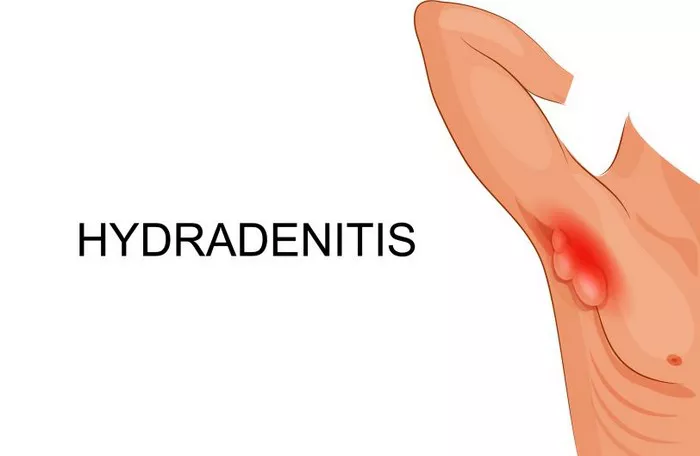Hidradenitis suppurativa (HS) is a chronic inflammatory skin condition characterized by painful, recurrent nodules and abscesses, primarily affecting areas rich in apocrine glands such as the axillae, groin, and buttocks. Alongside managing active flare-ups and preventing recurrences, addressing the scarring and skin changes resulting from HS is a significant aspect of treatment. Scar creams play a crucial role in this regard, offering hope for improved skin appearance and texture. In this article, we explore the considerations and options for selecting the best scar cream for hidradenitis suppurativa.
Understanding Scar Formation in Hidradenitis Suppurativa
Before delving into scar treatment, it’s essential to understand how scars develop in HS. The deep-seated inflammation and repeated abscess formation characteristic of HS can lead to the formation of hypertrophic scars or keloids. These scars can be not only physically uncomfortable but also emotionally distressing, impacting patients’ quality of life.
The scar tissue in HS can be quite stubborn, often requiring targeted treatment to soften, flatten, and improve its appearance. Scar creams are designed to assist in this process by providing ingredients that promote healing, reduce inflammation, and encourage collagen remodeling.
Key Considerations for Scar Creams
When evaluating scar creams for HS, several factors should be considered to maximize effectiveness:
1. Ingredients: Look for scar creams containing ingredients known for their effectiveness in scar reduction. Examples include silicone, which can hydrate and soften scars; vitamin E, which may help with skin regeneration; and onion extract (allium cepa), known for its anti-inflammatory properties.
2. Scar Type: Different scars respond differently to treatments. HS scars may vary in size, texture, and depth. Identify the type of scars you have (e.g., hypertrophic, atrophic) to select a cream tailored to your needs.
3. Skin Sensitivity: Individuals with HS often have sensitive skin prone to irritation. Opt for scar creams that are hypoallergenic and free from harsh chemicals and fragrances to minimize the risk of adverse reactions.
4. Clinical Evidence: Choose scar creams backed by clinical evidence demonstrating their efficacy in improving scar appearance, particularly in HS patients.
5. Ease of Application: Consider the ease of incorporating the scar cream into your daily skincare routine. Creams that are non-greasy and absorb quickly are often preferred.
Top Scar Creams for Hidradenitis Suppurativa
Based on the above considerations, here are some top scar creams recommended for managing HS scars:
1. Mederma Advanced Scar Gel
Mederma is a popular scar treatment containing onion extract and allantoin. It is well-tolerated by sensitive skin and has shown promising results in improving scar texture and color.
2. Strataderm Gel
Strataderm is a silicone-based gel that forms a protective layer over scars, promoting hydration and creating an optimal environment for scar healing. It is particularly useful for raised scars.
3. Bio-Oil Skincare Oil
Bio-Oil contains a blend of vitamins and plant extracts designed to improve the appearance of scars and stretch marks. It is lightweight and non-comedogenic, making it suitable for HS-prone skin.
4. ScarAway Silicone Scar Sheets
Silicone sheets like ScarAway can be effective for larger or more stubborn scars. They provide continuous pressure and hydration to scars, promoting smoother healing.
5. Cica-Care Silicone Gel Sheet
Cica-Care gel sheets are soft, self-adhesive silicone sheets that can be cut to size and applied directly to scars. They are comfortable to wear and have demonstrated efficacy in scar improvement.
Tips for Using Scar Creams Effectively
To maximize the benefits of scar creams for HS, consider the following tips:
1. Consistency: Apply scar cream consistently as directed by your healthcare provider or the product instructions. Results may take several weeks or months to become noticeable.
2. Sun Protection: Protect scars from sun exposure by using sunscreen or covering affected areas with clothing. UV radiation can worsen scar appearance.
3. Combine Therapies: Scar creams can be combined with other scar treatments such as laser therapy or corticosteroid injections for more significant improvements.
4. Monitor Progress: Keep track of changes in scar appearance over time. If you notice any adverse reactions or worsening of scars, consult your dermatologist promptly.
Conclusion
While managing hidradenitis suppurativa involves addressing various aspects of the condition, including scar management, using the right scar cream can contribute significantly to improving skin appearance and restoring confidence. By considering the specific needs of HS scars and selecting appropriate scar creams, individuals with HS can take proactive steps towards achieving smoother, healthier skin. Always consult with a dermatologist or healthcare professional before starting any new scar treatment regimen to ensure safety and efficacy tailored to your unique condition.
Related Topixs:


























